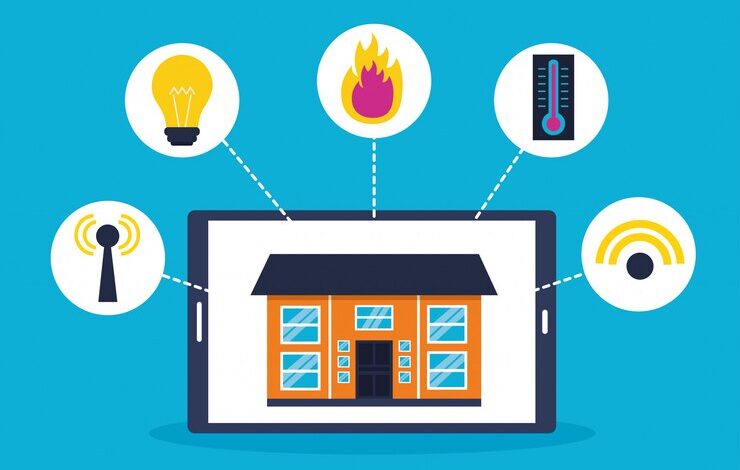Har Ghar Bijli: Powering Every Home in India

In a nation as vast and diverse as India, access to electricity is a crucial factor in determining the quality of life for its citizens. The initiative “Har Ghar Bijli,” meaning “Electricity for Every Home,” aims to ensure that every household across the country has reliable access to electricity. This article explores the significance of the Har Ghar Bijli initiative, its objectives, implementation strategies, challenges faced, and its impact on the lives of millions.
Understanding Har Ghar Bijli
Har Ghar Bijli is part of a broader vision to electrify rural and urban areas in India, ensuring that electricity reaches even the most remote villages and underserved communities. The program underscores the Indian government’s commitment to improving the standard of living, fostering economic growth, and promoting sustainable development.
The community plays a big role in Emoji Kitchen. Users contribute by sharing their favorite emoji combinations. They create and post unique emoji blends. These contributions inspire others. The community also helps with troubleshooting. They share tips and tricks for using the tool. This collaborative spirit makes Emoji Kitchen special. Together, the community and developers keep the platform fresh and fun.
The Historical Context
Electricity has been a cornerstone of modern development. However, despite significant advancements, many regions in India still lack consistent electricity supply. According to the Ministry of Power, as of 2019, approximately 300 million people in India lived without electricity. This gap has led to increased efforts from the government to bridge the divide and empower communities through energy access.
Objectives of Har Ghar Bijli
The primary objectives of the Har Ghar Bijli initiative are multifaceted:
1. Universal Electrification
The foremost goal is to achieve 100% electrification in every household, including those in remote and rural areas. This initiative is vital for improving the quality of life and providing essential services such as education, healthcare, and sanitation.
2. Economic Development
Access to electricity is crucial for economic growth. By providing reliable power supply, the initiative aims to boost local economies, encourage entrepreneurship, and create job opportunities.
3. Sustainable Development
The initiative promotes the use of renewable energy sources, thereby reducing dependency on fossil fuels and lowering carbon emissions. This aligns with India’s commitment to combating climate change and promoting sustainable practices.
4. Enhancing Education and Healthcare
Electricity plays a significant role in improving educational infrastructure and healthcare facilities. Schools can utilize electric lighting and technology, while hospitals can ensure better services with uninterrupted power supply.
5. Improving Quality of Life
With reliable electricity, households can access modern amenities such as lighting, cooking facilities, and communication tools. This enhances the overall quality of life and empowers families to pursue better opportunities.
Implementation Strategies
The successful execution of Har Ghar Bijli requires a comprehensive approach that involves multiple stakeholders, including government bodies, private sector players, and local communities. Here are some key strategies employed in the implementation of the initiative:
1. Policy Framework
The Indian government has established a robust policy framework to guide the electrification process. This includes schemes like the Pradhan Mantri Sahaj Bijli Har Ghar Yojana (Saubhagya), which aims to provide electricity connections to all households.
2. Collaboration with State Governments
State governments play a crucial role in the implementation of Har Ghar Bijli. By collaborating with state electricity boards and local authorities, the initiative can effectively reach underserved areas and ensure that electrification projects are aligned with regional needs.
3. Utilizing Renewable Energy Sources
To promote sustainability, the initiative emphasizes the use of renewable energy sources such as solar and wind power. By harnessing local resources, communities can achieve energy independence and reduce reliance on conventional power grids.
4. Community Involvement
Engaging local communities is essential for the success of Har Ghar Bijli. By involving residents in the planning and implementation process, the initiative ensures that electrification projects address specific needs and challenges faced by the community.
5. Capacity Building and Training
To ensure the sustainability of electrification projects, capacity building and training programs are essential. This involves training local technicians and electricians to maintain and operate electrical systems, empowering communities to take charge of their energy needs.
Challenges Faced
While the Har Ghar Bijli initiative has made significant strides, several challenges remain:
1. Infrastructure Deficiencies
Many rural areas still lack the necessary infrastructure to support electrification projects. This includes the absence of power lines, transformers, and substations, making it challenging to deliver electricity effectively.
2. Financial Constraints
Funding remains a significant hurdle for the successful implementation of electrification projects. While government schemes provide financial assistance, the overall investment needed to reach every household is substantial.
3. Geographical Barriers
India’s diverse terrain poses logistical challenges. Remote and hilly areas often have limited accessibility, making it difficult to extend power lines and infrastructure.
4. Awareness and Education
In some regions, there may be a lack of awareness regarding the benefits of electricity. Educating communities about the advantages of electrification is crucial for garnering support and participation.
5. Dependence on Fossil Fuels
Despite the push for renewable energy, many areas remain reliant on fossil fuels for power generation. Transitioning to cleaner energy sources requires significant investment and commitment from both the government and local stakeholders.
Impact of Har Ghar Bijli
The Har Ghar Bijli initiative has already begun to transform the lives of millions of Indians. Here are some notable impacts:
1. Improved Access to Education
With electricity, schools can utilize digital learning tools and provide better educational resources. Students can study after dark, leading to improved learning outcomes and increased attendance rates.
2. Enhanced Healthcare Services
Hospitals equipped with electricity can offer better healthcare services, including emergency care, surgical procedures, and diagnostics. This is especially critical in rural areas where access to medical facilities is limited.
3. Economic Growth and Employment Opportunities
The availability of electricity has spurred local businesses, enabling them to operate efficiently and expand their services. This, in turn, creates job opportunities and promotes economic development in communities.
4. Reduction in Household Chores
Access to electricity reduces the time spent on household chores. Families can utilize electric appliances for cooking, cleaning, and lighting, allowing them to allocate time to education and economic activities.
5. Increased Quality of Life
With modern amenities becoming accessible, families experience an improved quality of life. Reliable electricity fosters a sense of security and comfort, enhancing overall well-being.
Future Prospects
The vision of Har Ghar Bijli extends beyond mere electrification. As India progresses towards a more sustainable future, the initiative aims to:

1. Promote Smart Grids
The integration of smart grid technology can enhance the efficiency of electricity distribution, reduce losses, and improve reliability. Investing in smart infrastructure can help meet the growing energy demands of the country.
2. Encourage Decentralized Energy Systems
Decentralized energy systems, such as microgrids, can empower communities to manage their energy needs effectively. This approach promotes energy independence and resilience, especially in remote areas.
3. Focus on Energy Efficiency
Promoting energy-efficient appliances and practices can help reduce overall energy consumption. The initiative can educate households on energy-saving techniques, contributing to sustainability.
4. Enhance Community Participation
Encouraging greater community involvement in energy planning and management can lead to more sustainable outcomes. Empowering local stakeholders fosters ownership and accountability.
5. Strengthen Policy Frameworks
Continuously refining policies to adapt to changing circumstances is essential for the success of Har Ghar Bijli. A strong policy framework can provide the necessary guidance for long-term electrification goals.
Conclusion
The Har Ghar Bijli initiative represents a transformative step towards ensuring that every household in India has access to electricity. By prioritizing universal electrification, economic development, and sustainability, the initiative aims to empower communities and improve the quality of life for millions.
While challenges remain, the commitment of the Indian government, along with the active participation of local communities, is key to overcoming these obstacles. As India moves towards a brighter, more electrified future, Har Ghar Bijli stands as a beacon of hope, promising opportunities and empowerment for generations to come.
In summary, the journey toward electrifying every home in India is not just about providing power; it’s about unlocking potential, fostering growth, and creating a better tomorrow for all. With continued efforts and dedication, the vision of Har Ghar Bijli can become a reality, lighting up every corner of the nation.





